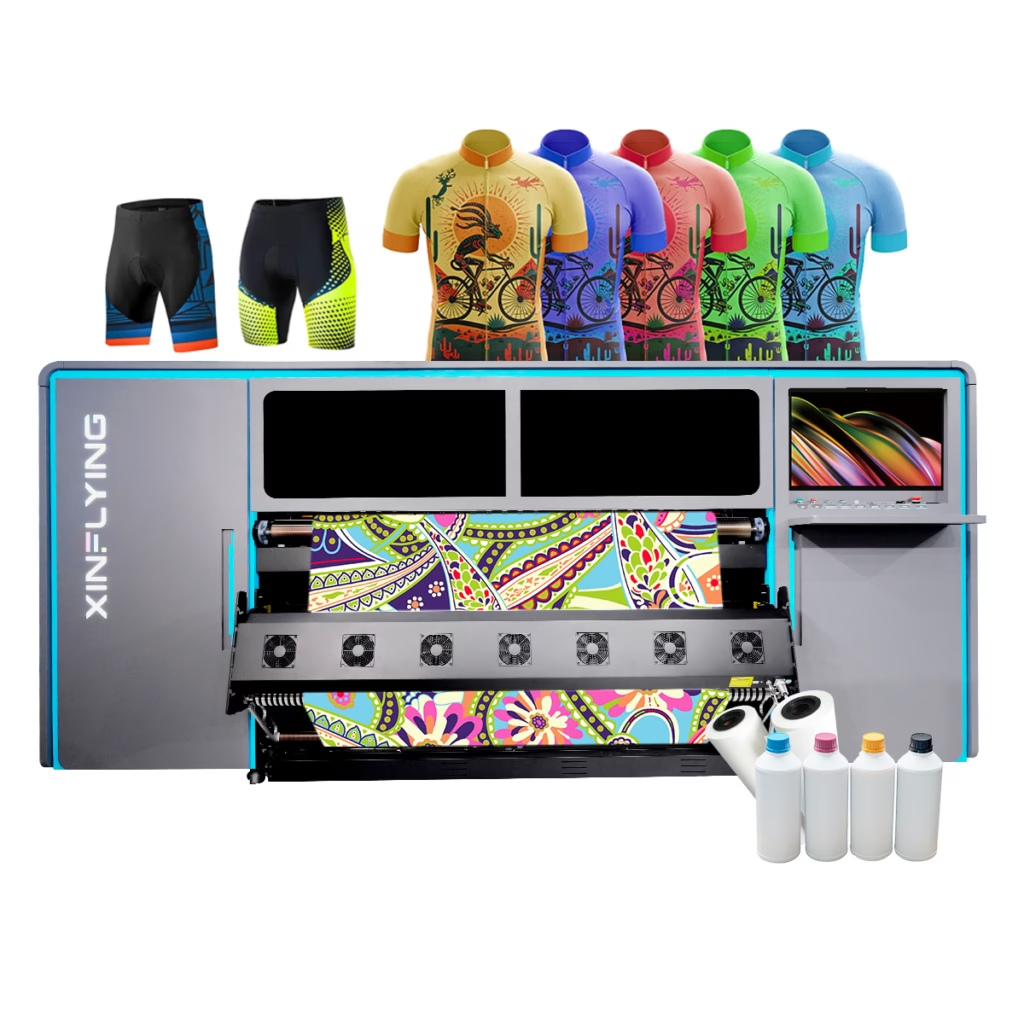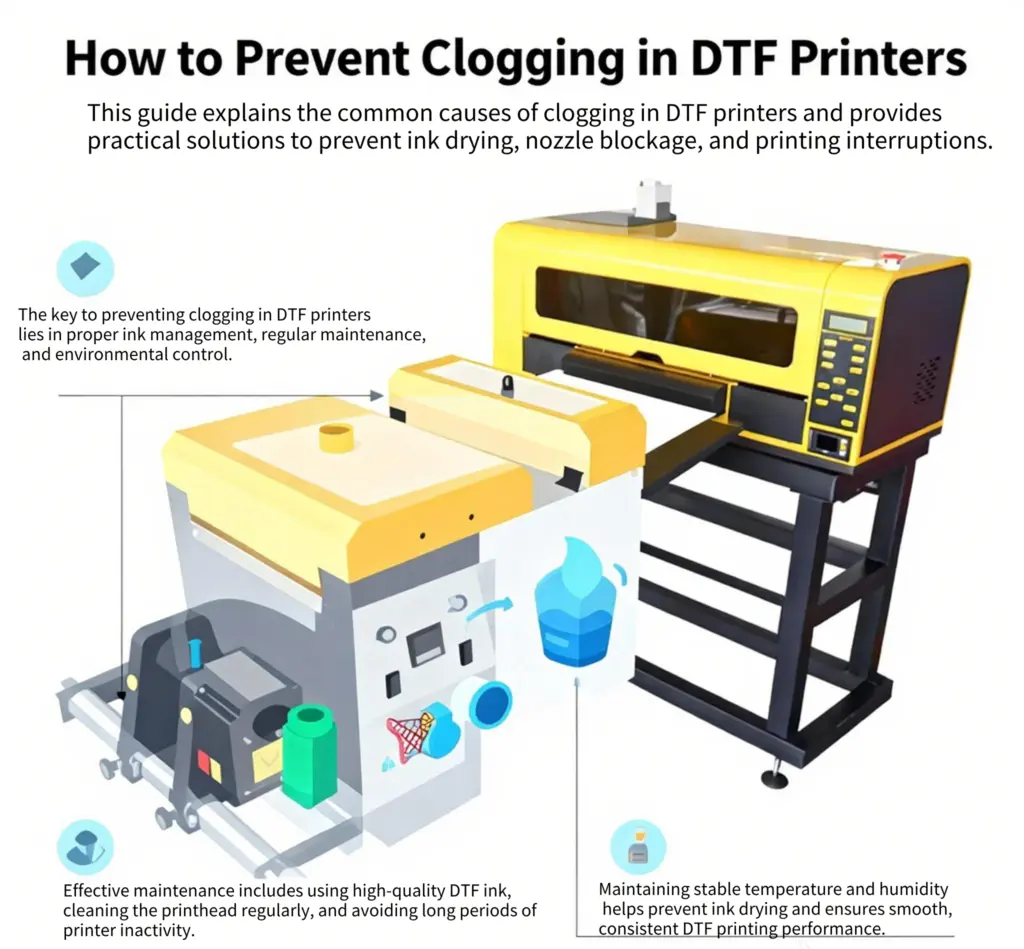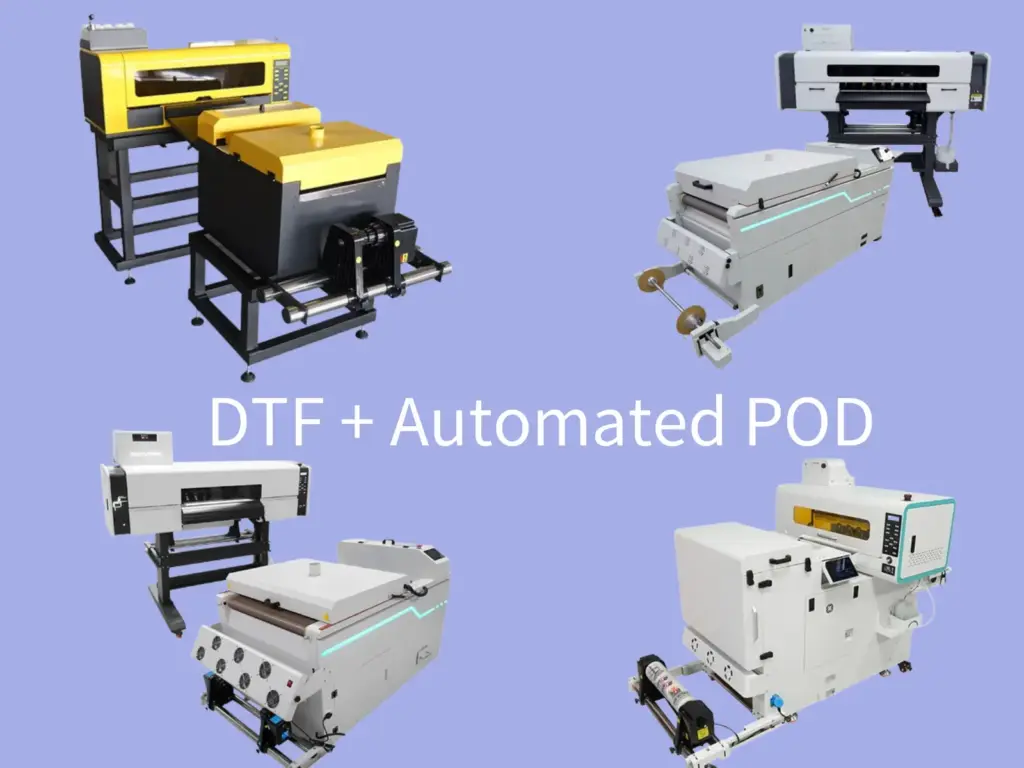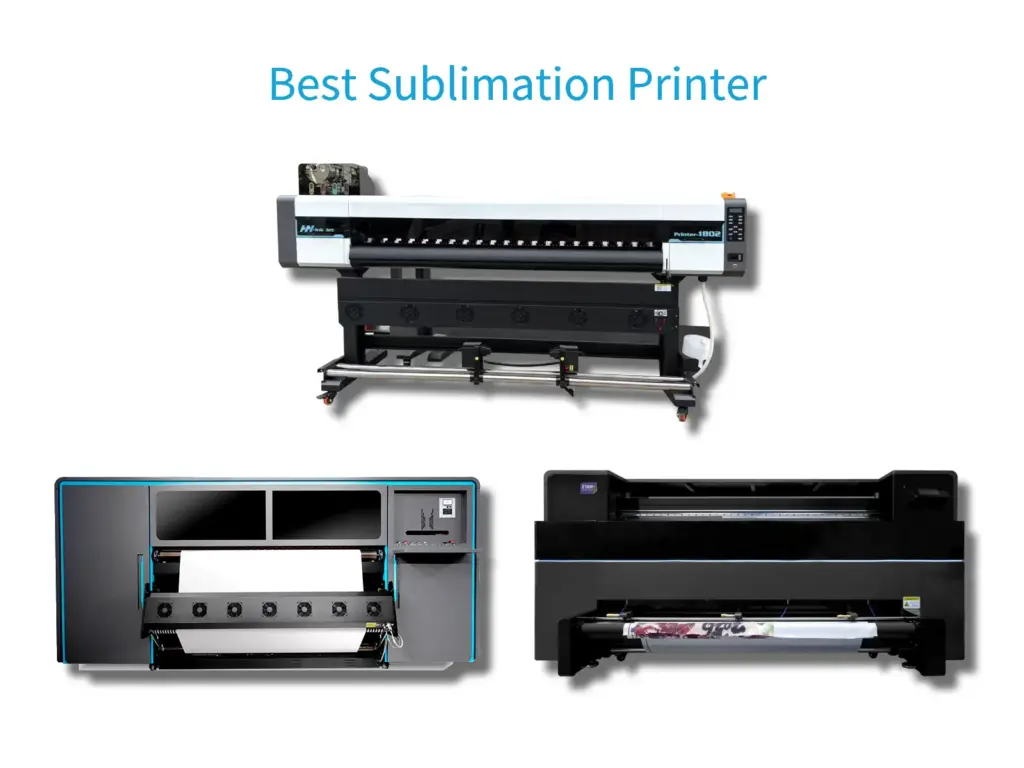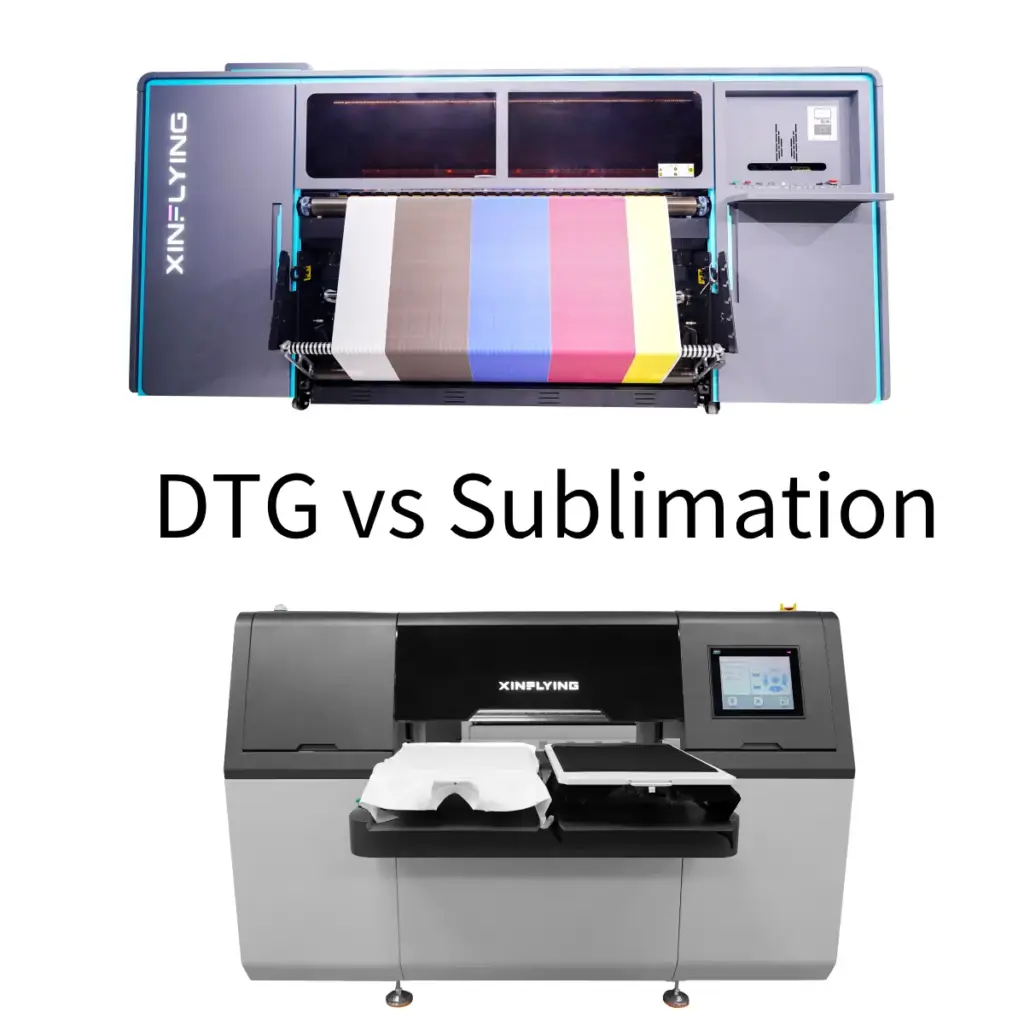Transfer Digital Tinta Putih (DTF) pencetakan baru ada sekitar dua dekade, menjadikannya teknologi yang relatif baru. Meskipun usianya masih muda, hal ini berdampak signifikan terhadap seluruh industri. Adopsi dan ketersediaan teknologi DTF yang meluas telah mendorong pertumbuhan pasar dengan kecepatan yang menakjubkan. Belum, pertumbuhan pesat ini juga meningkatkan persaingan industri.
Perkembangan Pasar DTF
Menurut sebuah laporan oleh Keypoint Intelligence, volume cetak DTF masuk 2022 diperkirakan sekitar 1.9 miliar meter persegi. Oleh 2027, angka ini diperkirakan akan meroket hingga kira-kira 10 miliar meter persegi.
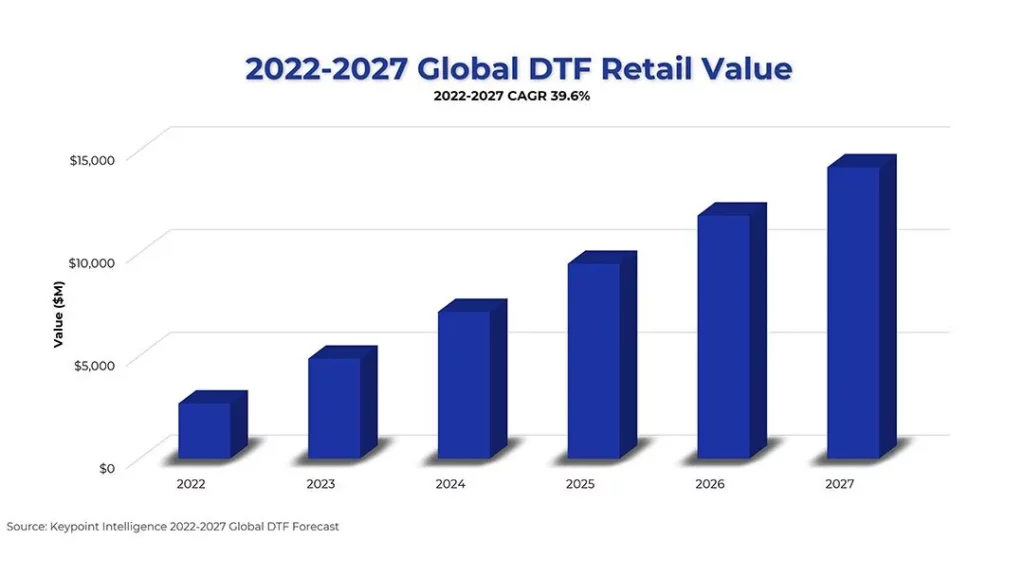
Dari segi nilai pasar, laporannya menyarankan itu nilai eceran pasar DTF adalah $2.78 miliar masuk 2022. Oleh 2027, jumlah ini diperkirakan akan mencapai angka yang mencengangkan $14 miliar. Laporannya menyoroti itu “Tingkat adopsi DTF belum pernah terjadi sebelumnya di industri pakaian jadi. Di dalam 2022, Perangkat DTF menyumbang sekitar 44.5% dari semua DTF, langsung ke pakaian (DTG), dan mentransfer instalasi perangkat. Oleh 2027, Printer DTF diharapkan bisa menebusnya 64.4% dari instalasi tersebut.”
Laporannya juga mencatat itu ada sekitar 9,082 Perangkat DTF di seluruh dunia 2022. Jumlah ini diperkirakan akan bertambah hingga hampir mencapai angka tersebut 15,000 oleh 2027, dengan mesin printer DTF kepala ganda mendominasi pasar, Dan printer DTF empat kepala mencakup sekitar seperempat pangsa pasar.
Bisakah DTF Tetap Menjadi Bisnis yang Menguntungkan?
Mengingat tren ini, orang mungkin bertanya-tanya: Apakah DTF masih bisa menjadi bisnis yang menguntungkan? Jawaban singkat dan pastinya adalah: Ya. Namun, untuk penyedia layanan pencetakan (PSP) untuk mencapai profitabilitas jangka panjang dan margin yang tinggi, mereka harus mahir memanfaatkan teknik pencetakan DTF dalam penawaran layanan dan produksi.
Dalam beberapa tahun terakhir, aksesibilitas mesin DTF telah mendorong pertumbuhan pasar. Solusi peralatan yang terjangkau dari Tiongkok berarti hampir semua orang dapat menawarkan layanan DTF kepada pelanggan. Meskipun ini bagus untuk bisnis yang ingin melakukan diversifikasi, hal ini juga menyebabkan kejenuhan pasar.
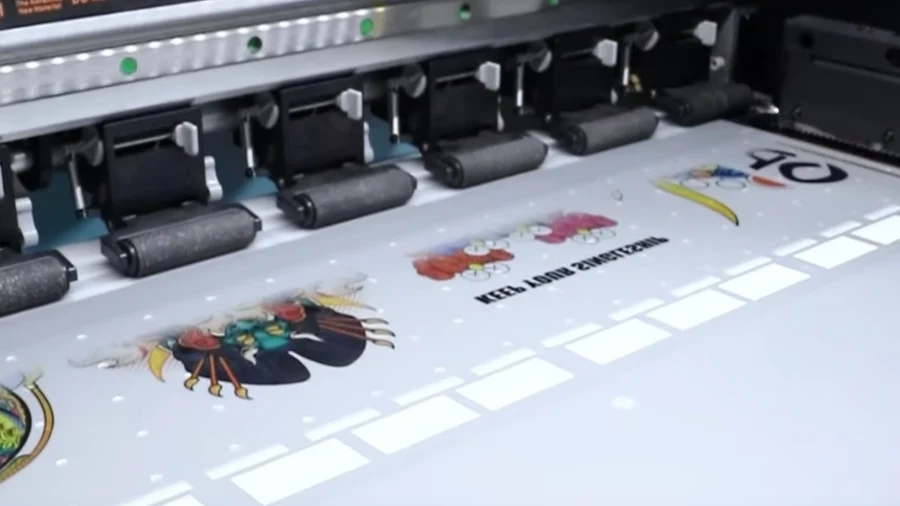
laporan Keypoint Intelligence langsung mengatasi masalah ini, mencatat itu “pasar DTF masih dalam tahap awal, dengan gejolak yang signifikan di antara pemasok perangkat keras. Jalur pengembangannya mencerminkan evolusi awal DTG.”
Jadi, bagaimana seseorang dapat menonjol dari persaingan dan menarik klien yang berharga? Jawabannya sederhana: menawarkan layanan yang lebih baik.
Untuk pelanggan yang mencari solusi cepat dan murah tanpa tuntutan kualitas tinggi, ada banyak pilihan. Namun, klien yang sadar kualitas lebih suka bekerja dengan produsen printer DTF yang unggul, yang berarti bermitra dengan mesin printer DTF merek papan atas.
Mengapa DTF Begitu Populer?
Sebelum mendalami apa yang membuat mesin DTF berkualitas tinggi, mari kita pahami dulu DTF dan mengapa teknologi ini begitu populer teknik cetak tekstil.

Mudah Dipelajari dan Dikuasai
Pertama, Teknologi DTF mudah dipelajari dan dikuasai. Mencetak dengan tinta pigmen berbahan dasar air pada film PET sangat mirip dengan pencetakan kertas, membuatnya mudah untuk toko percetakan. Selain itu, itu bisa dilakukan di ruang yang relatif kecil, membuatnya dapat diakses oleh bisnis dari semua ukuran.
Kecepatan Pencetakan Cepat
Kedua, Teknologi pencetakan DTF cepat, memungkinkan PSP mencapai waktu penyelesaian yang cepat. Setelah pencetakan film selesai, itu dapat disimpan sampai diperlukan untuk transfer, memungkinkan PSP untuk mempersiapkan pekerjaan terlebih dahulu dan menghilangkan kebutuhan pencetakan ganda putih atau CMYK dengan metode lain.
Proses Paling Hemat Biaya
Lebih-lebih lagi, ketika film DTF Dan bubuk perekat panas menimbulkan biaya tambahan, DTF seringkali terbukti menjadi proses yang paling hemat biaya, memberikan manfaat ekonomi kepada PSP dengan berbagai ukuran.
Rentang Aplikasi yang Luas
akhirnya, jangkauan aplikasi yang luas membuka berbagai pasar bagi perusahaan percetakan. Teknologi pencetakan DTF dapat digunakan untuk mencetak pada pakaian umum seperti kaos, hoodie, dan pakaian olahraga, serta barang-barang promosi dan bahkan dekorasi interior.
DTF vs. Percetakan DTG
Saat membahas DTF, kita juga harus menyebutkan DTG. Bagaimanapun, keduanya menggunakan metode pencetakan langsung.
Pencetakan DTG tidak memerlukan transfer atau film dan bubuk, tetapi bahkan dengan mempertimbangkan biaya-biaya ini, DTF masih sering menawarkan keunggulan biaya. Selain itu, DTF tidak memerlukan pra-perawatan dan cocok untuk berbagai jenis serat. Akhirnya, dalam hal rentang warna, detail halus, dan elastisitas pakaian, Metode pencetakan DTF menawarkan keunggulan unik.
Masa Depan Teknologi Percetakan DTF
Poin-poin yang dibahas di atas didasarkan pada penawaran pasar saat ini, tapi bagaimana dengan masa depan?
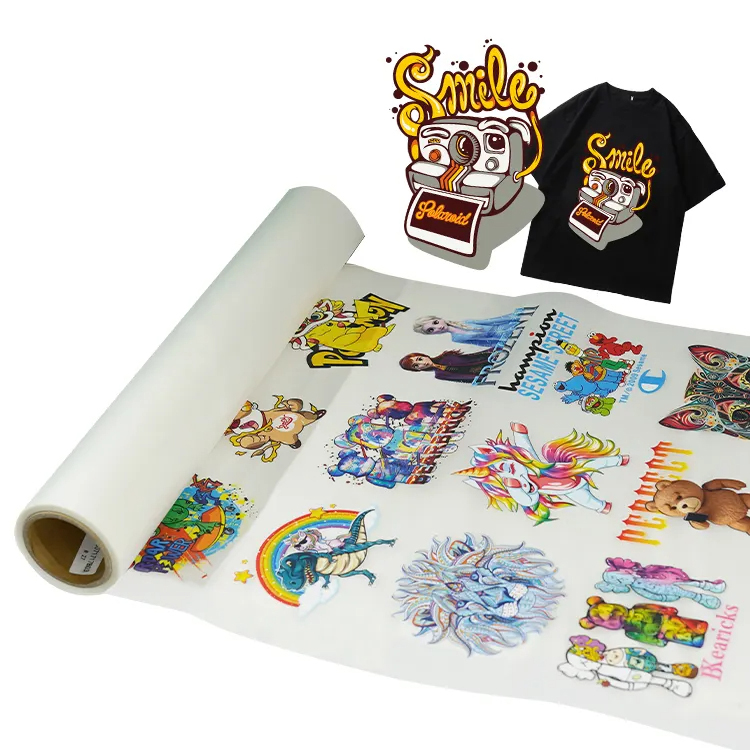
Inovasi di 2024 FESPA
Di 2024 FESPA, kami melihat beberapa inovasi di bidang DTF, dengan produsen dan pemasok menjanjikan banyak perkembangan menarik. Salah satu faktor utama yang mempengaruhi pasar DTF dan semua sektor percetakan adalah keberlanjutan. Seiring dengan meningkatnya permintaan pelanggan akan pencetakan ramah lingkungan, produsen harus merespons, yang terlihat di domain DTF.
Persembahan Terbaru Mimaki
Ambil Mimaki, Misalnya. Pabrikan baru-baru ini mengumumkan Mimaki TxF300-75 baru, mampu mencetak pada kapas, poliester, dan campuran poliester, serta kain terang dan gelap, menawarkan yang terbaik dari dunia pencetakan DTF dan DTG.
Mesin baru ini hadir dengan garansi standar dua tahun dan menggunakan tinta Mimaki yang disertifikasi oleh OEKO-TEX ECO PASSPORT, memenuhi meningkatnya permintaan pelanggan akan produksi ramah kulit dan ramah lingkungan.
Model baru ini bertujuan untuk melanjutkan kesuksesan awal seri DTF Mimaki yang diluncurkan tahun lalu. TxF150-75 telah terjual habis 300 unit di Eropa, Timur Tengah, dan Afrika. Mimaki mengklaim model terbaru ini tiga kali lebih cepat dibandingkan model sebelumnya, dirancang untuk pasar dekorasi garmen massal profesional.
“Kata Direktur Penjualan Hibrida, ‘TxF300-75 menunjukkan peningkatan pesat dalam popularitas proses direct-to-film. Sekarang, diluncurkan bersamaan dengan TxF150-75 yang sukses, hal ini menawarkan lebih banyak pilihan bagi bisnis yang memasuki atau memperluas pasar dekorasi garmen.'”
RA Smart juga mendukung DTF, telah mendistribusikan solusi DTF dari Polytech, salah satu pionir dalam teknologi DTF, sejak 2021.
Kontribusi RA Smart
Manajer Pemasaran Produk RA Smart Alex Mighall telah menyaksikan langsung perluasan pasar ini. Dia mengaitkan pertumbuhan DTF yang luar biasa dengan keunggulan teknologinya yang unik dan menyoroti kemunculan berbagai platform DTF dalam beberapa tahun terakhir. Ia menambahkan bahwa masuknya merek-merek besar hanya akan mendorong pertumbuhan lebih lanjut.
“Niscaya, Teknologi DTF menawarkan solusi terbaik, namun bekerja sama dengan distributor yang memiliki reputasi baik sangatlah penting untuk meminimalkan kurva pembelajaran teknologi baru.”
Tren Pasar dan Prospek Masa Depan
Mengenai tren pasar, RA Smart telah mengidentifikasi tren keseluruhan pada mesin DTF: memberikan waktu penyelesaian yang lebih cepat bagi pelanggan dan meningkatkan keragaman produk yang dapat dihasilkan oleh satu mesin.
Dia mencatat bahwa pemasok percetakan besar kini berinvestasi pada banyak mesin dan sistem yang lebih efisien, sehingga permintaan akan sistem produktivitas yang lebih tinggi akan terus meningkat.
Haruskah Anda Berinvestasi pada Printer DTF?
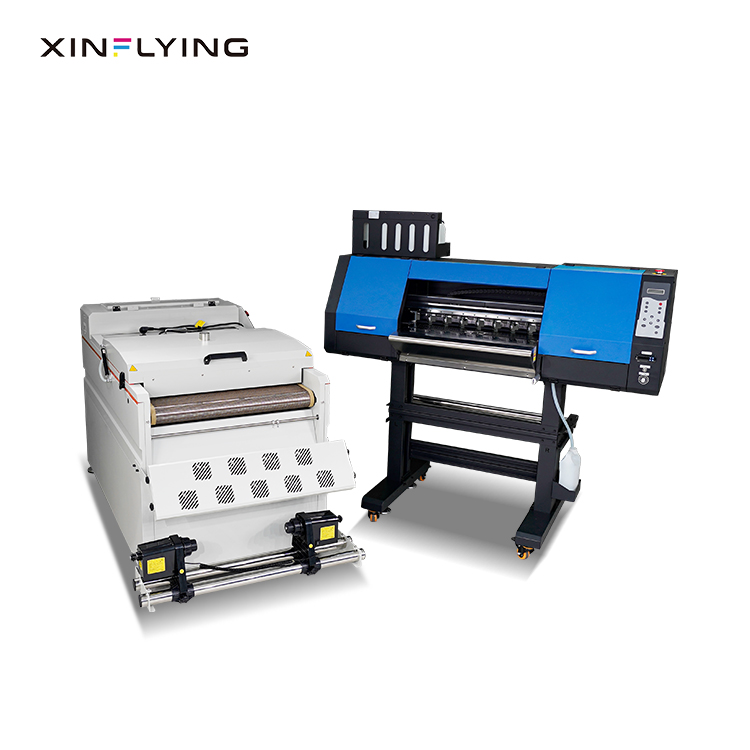
Tidak diragukan lagi ada banyak pilihan Mesin pencetak DTF, namun pendapat mengenai apakah akan berinvestasi akan berbeda-beda. Bagi mereka yang ingin memasuki pasar DTF, salah satu pilihannya adalah berkolaborasi produsen printer tekstil profesional. Tentu saja, ini berarti melepaskan sejumlah keuntungan tetapi juga menghindari kerumitan berinvestasi dalam pelatihan dan dapat segera mulai menerima pesanan.
Jadi, apakah itu layak? Itu tergantung pada seberapa banyak DTF yang Anda rencanakan. Jika Anda sudah memiliki perjanjian dengan pelanggan yang sudah ada, yakin dengan pesanan Anda, dan mahir dalam teknologi ini, mungkin ada baiknya menyelaminya secara langsung. Di samping itu, jika Anda ingin menguji keadaan sebelum berkomitmen penuh, bermitra dengan mitra dagang juga merupakan pilihan yang baik.
Kesimpulan
Kesimpulannya, Ada banyak hal menarik mengenai teknologi pencetakan DTF. Teknologi ini tidak hanya memungkinkan untuk menghasilkan berbagai produk cetakan tetapi juga menunjukkan perkembangan yang pesat, dengan banyak perusahaan besar memasuki pasar dengan mesin DTF mereka sendiri. Hal ini menunjukkan bahwa kita dapat mengharapkan pertumbuhan dan ekspansi yang lebih besar lagi di pasar yang sudah sangat aktif ini.


